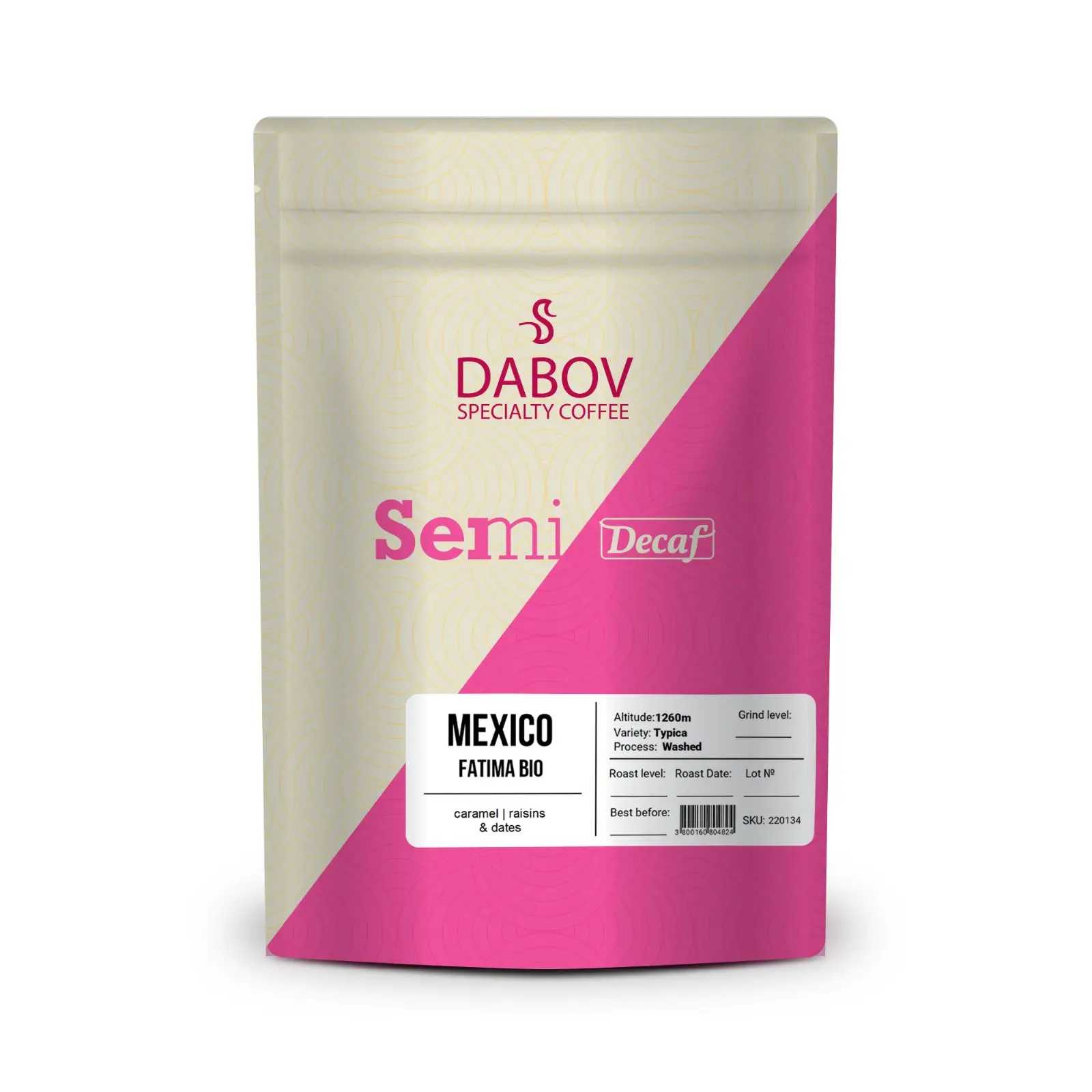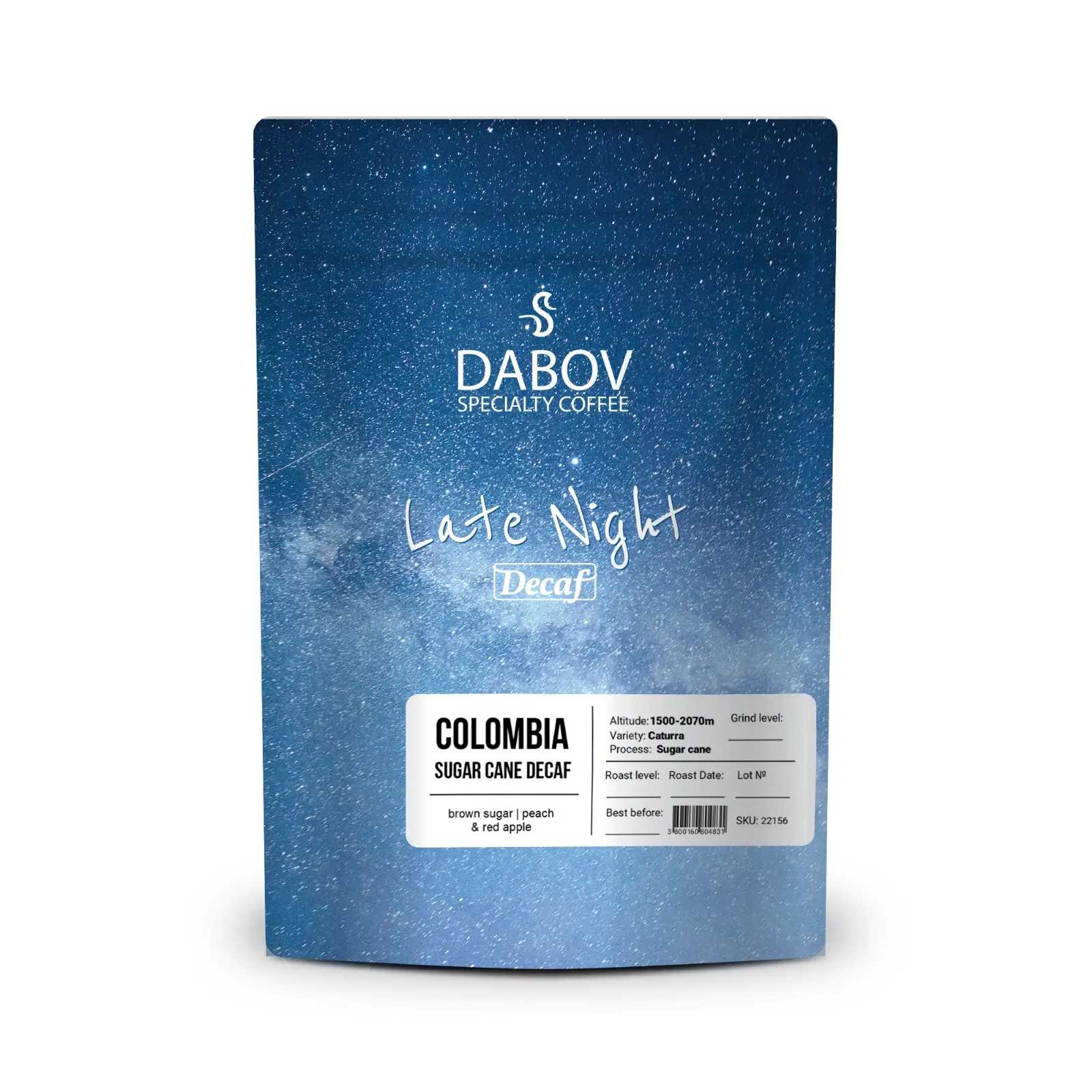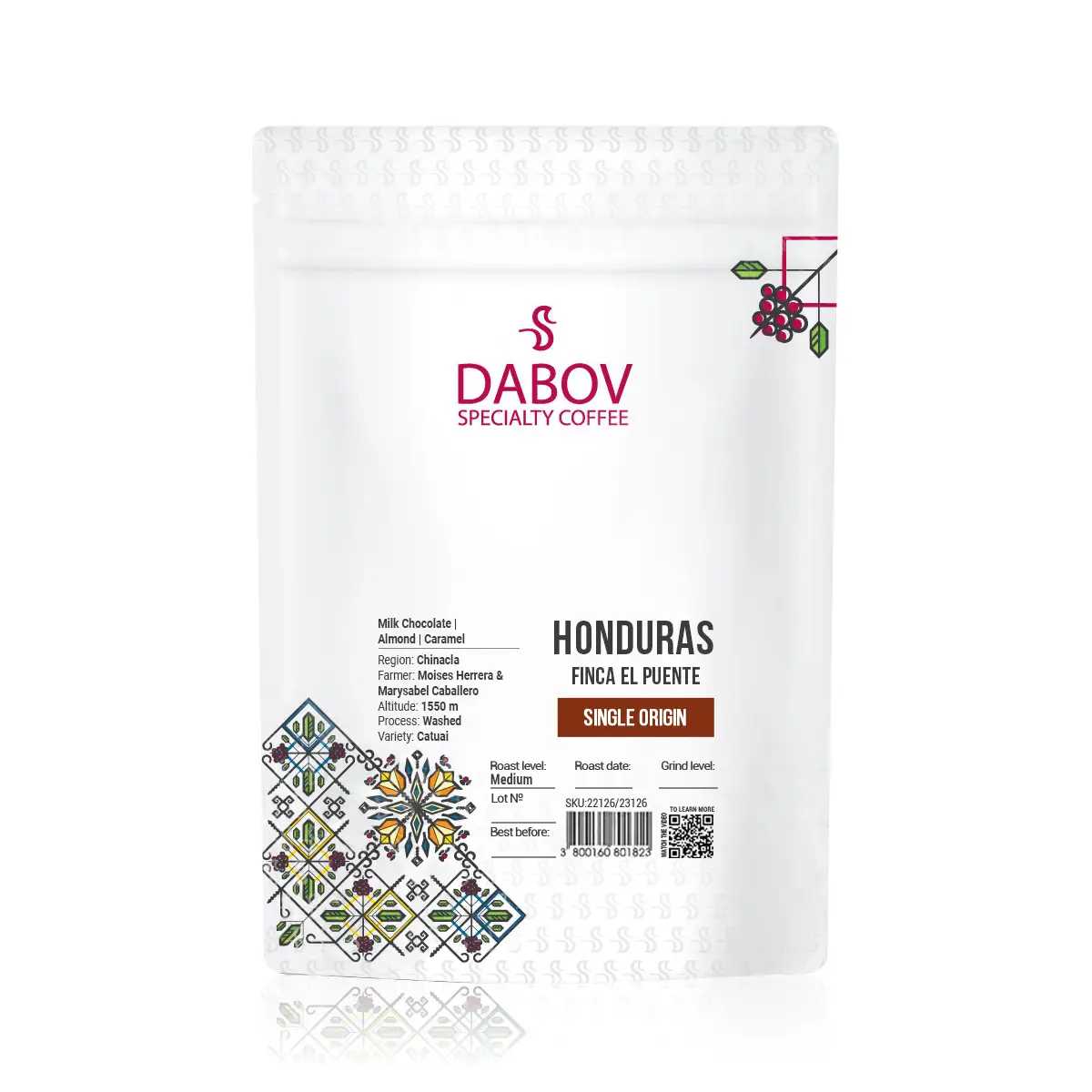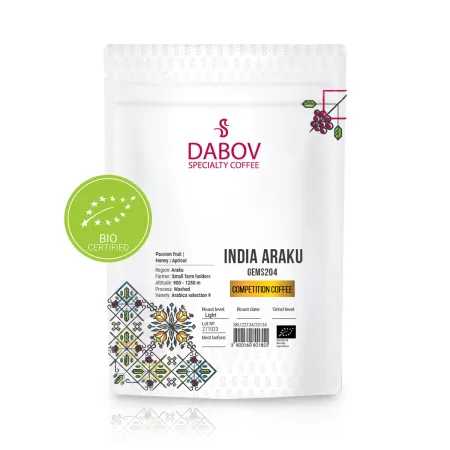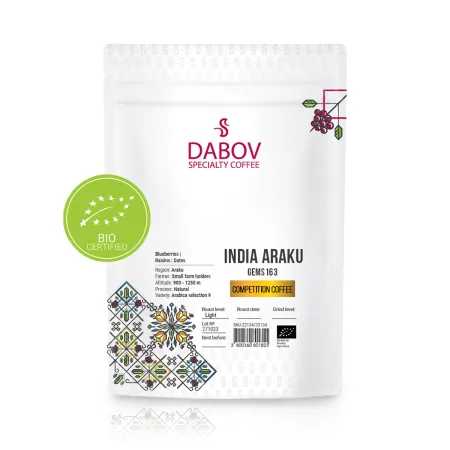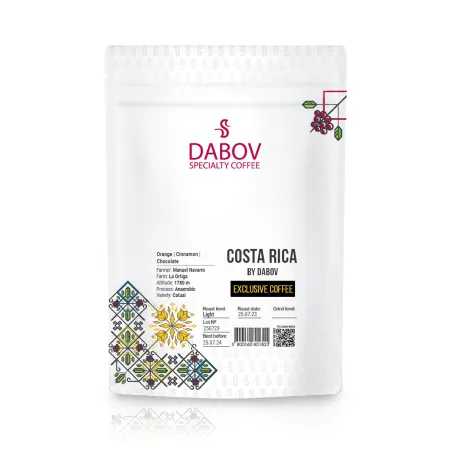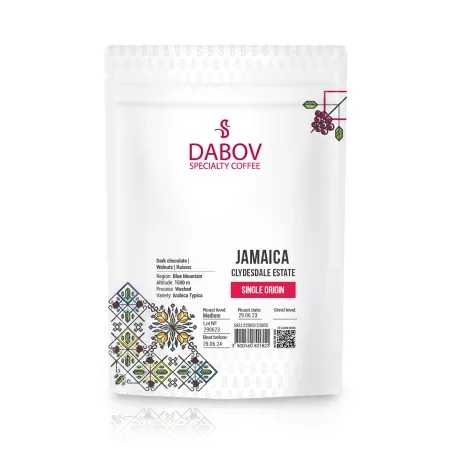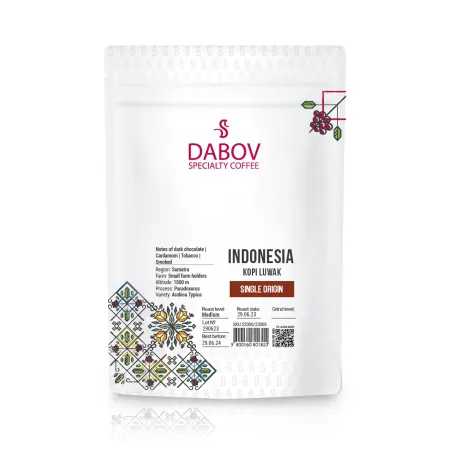How to Maintain Your Coffee Grinder for Optimal Performance
Unlock the secret to a perfect cup of coffee by mastering the art of coffee grinder maintenance. From understanding different grinder types to practical tips for keeping your grinder in top shape, this article dives deep into the essentials every coffee lover should know. Discover how the right care can enhance flavor, grind consistency, and prolong the lifespan of your grinder. We’ll cover everything from daily cleaning routines to troubleshooting common issues. Plus, learn when it’s time to seek professional help. Keep your coffee experience at its best by following these expert tips for maintaining your coffee grinder.
Coffee enthusiasts and casual drinkers alike understand that the key to a perfect cup of coffee lies not just in the beans themselves, but in the grinding process. A well-maintained coffee grinder is the unsung hero of your morning ritual, silently working to ensure that each brew reaches its full potential. In this comprehensive guide, we'll delve deep into the world of coffee grinder maintenance, exploring the intricacies of keeping your grinder in top-notch condition for optimal performance. Whether you're a seasoned barista or a home brewing novice, this article will equip you with the knowledge and techniques to elevate your coffee game through proper grinder care.
Introduction
The importance of coffee grinding in the pursuit of the perfect cup cannot be overstated. The process of grinding coffee beans just before brewing is crucial for preserving the volatile compounds that give coffee its complex flavors and aromas. A well-maintained grinder ensures consistency in particle size, which is essential for even extraction and balanced flavor. By taking the time to care for your grinder, you're not just extending its lifespan; you're investing in the quality of every cup you brew.
This article aims to provide you with a comprehensive guide to coffee grinder maintenance. We'll explore the different types of grinders, the impact of proper care on performance, and provide you with practical, expert-level tips to keep your grinder operating at its peak. By the end of this read, you'll have the knowledge to implement a maintenance routine that will transform your coffee experience.
1. Understanding Your Coffee Grinder
1.1. Types of Coffee Grinders
When it comes to coffee grinders, there are two main categories: burr grinders and blade grinders. Each type has its own unique characteristics that affect grind consistency and, ultimately, the flavor of your coffee.
Burr grinders are the gold standard in the coffee world. They consist of two abrasive surfaces (burrs) that crush the beans into uniform particles. These grinders come in two varieties: flat burr and conical burr. Flat burr grinders use two parallel rings with sharp edges to grind beans, while conical burr grinders employ a cone-shaped burr that fits inside a ring-shaped burr. The advantage of burr grinders lies in their ability to produce consistent grind sizes, which is crucial for even extraction during brewing. This consistency leads to a more balanced and flavorful cup of coffee.
Blade grinders, on the other hand, use a propeller-like blade to chop the beans. While more affordable, blade grinders often produce inconsistent particle sizes, which can lead to uneven extraction and potentially bitter or weak coffee. The lack of control over grind size makes blade grinders less ideal for brewing methods that require precise particle sizes, such as espresso or pour-over.
Understanding the type of grinder you have is crucial for implementing the right maintenance routine. Burr grinders, with their more complex mechanisms, require more detailed cleaning and care, while blade grinders are simpler to maintain but may need more frequent attention to ensure optimal performance.
1.2. How Grinder Characteristics Affect Performance
The design and features of your coffee grinder play a significant role in its performance and the quality of your coffee. Let's explore some key characteristics that impact grinder efficiency and the resulting brew:
Grind Settings: High-quality grinders offer a wide range of grind settings, allowing you to adjust the particle size for different brewing methods. The ability to make fine adjustments is particularly important for espresso, where even small changes in grind size can dramatically affect extraction. A well-maintained grinder with accurate settings ensures you can consistently achieve the desired grind for your preferred brewing method.
Materials: The materials used in a grinder's construction, especially for the burrs, significantly impact its longevity and performance. Ceramic burrs are known for their durability and heat resistance, which helps maintain consistent grind temperatures. Steel burrs, while slightly less durable, are often sharper and can produce more uniform particles. The material of the grinder's body also matters; stainless steel and high-grade plastics are less prone to static buildup, which can affect grind consistency and cleanliness.
Motor Type: The motor is the heart of your grinder, and its quality directly affects grinding speed, heat generation, and noise levels. Direct drive motors, often found in higher-end grinders, provide consistent power and are less prone to overheating during extended use. Gear reduction motors, while potentially noisier, can offer more torque for grinding tougher beans. Regular maintenance of the motor, such as keeping it clean and well-lubricated, is crucial for long-term performance.
Dosing Mechanism: Some grinders come with built-in dosing mechanisms that measure out specific amounts of ground coffee. While convenient, these systems require regular cleaning to prevent stale coffee buildup, which can taint fresh grounds. Understanding how to maintain your grinder's dosing system is essential for consistent flavor in each brew.
Heat Generation: Friction during grinding generates heat, which can negatively impact coffee flavor by causing oils to evaporate prematurely. High-quality grinders are designed to minimize heat transfer to the beans. Regular maintenance, such as cleaning the burrs and ensuring proper alignment, helps reduce unnecessary friction and heat generation.
Static Buildup: Static electricity can cause ground coffee to cling to surfaces within the grinder, leading to retention and inconsistent dosing. Some grinders incorporate anti-static materials or features to mitigate this issue. Proper cleaning and occasional use of anti-static sprays can help manage static buildup in grinders prone to this problem.
By understanding these characteristics and how they affect your grinder's performance, you can tailor your maintenance routine to address specific areas that impact your coffee quality. Regular attention to these aspects ensures that your grinder continues to perform at its best, delivering consistent, high-quality grounds for every brew.
2. Importance of Coffee Grinder Maintenance
2.1. Effects of Neglected Maintenance
Neglecting the maintenance of your coffee grinder can lead to a cascade of issues that not only affect the quality of your coffee but can also shorten the lifespan of your equipment. Let's delve into the potential problems that can arise from poor maintenance:
Stale Coffee Flavor: One of the most immediate and noticeable effects of neglected grinder maintenance is the degradation of coffee flavor. Over time, oils and fine coffee particles accumulate in the grinder's burrs, chute, and collection bin. These residues can become rancid, imparting off-flavors to freshly ground coffee. Even if you're using high-quality, freshly roasted beans, the stale residue can taint your brew, resulting in a flat, bitter, or unpleasant taste.
Uneven Grind: As burrs wear down or become misaligned due to lack of maintenance, the grinder's ability to produce consistent particle sizes diminishes. This unevenness in grind size leads to extraction issues during brewing. Finer particles may over-extract, contributing bitterness, while larger particles under-extract, adding sourness or weakness to the cup. The result is an unbalanced, less enjoyable coffee experience.
Mechanical Failures: Regular maintenance isn't just about cleaning; it's also about identifying and addressing potential mechanical issues before they become serious problems. Neglected grinders may develop issues such as worn bearings, loose burrs, or motor strain. These problems can escalate, leading to complete grinder failure, which is often more expensive to repair than the cost of regular maintenance.
Reduced Efficiency: A poorly maintained grinder often works harder to process beans, leading to increased grinding times and potential overheating. This not only affects the flavor of your coffee but can also strain the motor, shortening its lifespan. Additionally, clogged burrs and chutes can result in inconsistent dosing, making it challenging to achieve repeatable brewing results.
Hygiene Concerns: Coffee oils and particles can create an environment conducive to mold and bacteria growth, especially in humid conditions. This not only affects flavor but can also pose health risks. Regular cleaning prevents the buildup of these potential contaminants, ensuring that your coffee preparation remains safe and hygienic.
Loss of Grind Settings Accuracy: Many grinders, especially those with stepless adjustment systems, rely on clean, well-maintained components to maintain accurate grind settings. As residue builds up and parts wear unevenly, the grind settings may become less precise, making it difficult to dial in the perfect grind for your brewing method.
Increased Static Buildup: Neglected grinders often experience more problems with static electricity, causing grounds to cling to surfaces and leading to messy, inconsistent dosing. This can result in waste and frustration, especially when trying to achieve precise measurements for espresso or other exacting brewing methods.
By understanding these potential issues, it becomes clear that regular maintenance is not just a recommendation but a necessity for anyone serious about their coffee. The time and effort invested in caring for your grinder pay dividends in the form of better-tasting coffee, more consistent brewing results, and a longer-lasting piece of equipment.
2.2. Benefits of Optimal Grinder Performance
Maintaining your coffee grinder in optimal condition offers a multitude of benefits that extend far beyond just prolonging its lifespan. Let's explore how regular maintenance enhances both the flavor of your coffee and the consistency of your brewing process:
Enhanced Flavor Extraction: A well-maintained grinder produces uniform particle sizes, which is crucial for even extraction during brewing. This consistency allows water to interact with the coffee grounds in a predictable manner, extracting the full spectrum of flavors and aromas from your beans. You'll notice improved clarity in flavor notes, better balance between acidity and sweetness, and a more pronounced aroma in your cup. This enhanced extraction brings out the nuanced characteristics of single-origin coffees and allows blends to shine with their intended flavor profiles.
Consistency Across Brews: One of the hallmarks of a great coffee experience is the ability to replicate that perfect cup day after day. A properly maintained grinder provides the consistency needed to achieve this. By ensuring that your grinder produces the same grind quality and particle distribution each time, you eliminate one of the major variables in coffee brewing. This consistency allows you to focus on fine-tuning other aspects of your brewing process, knowing that your grind remains a constant.
Versatility in Brewing Methods: Different brewing methods require different grind sizes for optimal extraction. A well-maintained grinder with accurate settings allows you to easily switch between brewing methods without compromising quality. Whether you're preparing a fine grind for espresso, a medium grind for drip coffee, or a coarse grind for cold brew, a properly functioning grinder can accommodate these variations with precision.
Improved Equipment Longevity: Regular maintenance not only keeps your grinder performing at its best but also significantly extends its lifespan. By preventing the buildup of coffee oils and particles, you reduce wear on crucial components like burrs and motors. This means your investment in a quality grinder pays off over a longer period, saving you money in the long run and ensuring you continue to enjoy great coffee for years to come.
Energy Efficiency: A clean, well-maintained grinder operates more efficiently, requiring less energy to grind beans. This efficiency translates to faster grinding times and less strain on the motor, which can lead to lower energy consumption over time. For commercial settings, this increased efficiency can result in noticeable energy savings.
Reduced Waste: Optimal grinder performance means less coffee waste. When your grinder is functioning correctly, you're less likely to experience issues like static cling or retention of grounds in the chute. This means more of your precious coffee beans end up in your cup rather than stuck in the grinder or scattered on your counter.
Enhanced Workflow: For coffee professionals and enthusiasts who prepare multiple cups a day, a well-maintained grinder streamlines the brewing process. You'll spend less time adjusting settings, dealing with clumps, or cleaning up excess grounds. This improved workflow is particularly valuable in busy cafes or during hectic morning routines.
Preservation of Bean Quality: High-quality coffee beans deserve a grinder that can do them justice. A maintained grinder with sharp burrs and minimal heat generation during grinding helps preserve the delicate flavors and aromas of your beans. This means you get the full benefit of investing in premium coffee, with each cup showcasing the beans' intended characteristics.
By prioritizing the maintenance of your coffee grinder, you're not just caring for a piece of equipment; you're investing in the quality of every cup of coffee you brew. The benefits of optimal grinder performance touch every aspect of the coffee experience, from the flavor in your cup to the efficiency of your brewing routine. As we move forward in this guide, we'll explore the specific maintenance techniques that will help you achieve and maintain this level of performance.
3. Essential Coffee Grinder Maintenance Tips
3.1. Regular Cleaning
Maintaining a clean coffee grinder is fundamental to ensuring optimal performance and flavor in your brews. Regular cleaning prevents the buildup of coffee oils and particles that can lead to stale flavors and inconsistent grinds. Here's a detailed look at daily cleaning practices that every coffee enthusiast should adopt:
Empty the Grounds: After each use, make it a habit to empty any remaining grounds from the grinder. This simple step prevents old coffee from mixing with fresh grounds in your next brew. For burr grinders, gently tap the sides to dislodge any grounds stuck in the burrs or chute. Some grinders come with a brush specifically designed for this purpose; if not, a soft-bristled brush can be equally effective.
Wipe Down Surfaces: Use a clean, dry cloth to wipe down the exterior of the grinder, paying special attention to areas where coffee dust tends to accumulate. This not only keeps your grinder looking pristine but also prevents the transfer of oils and dust to your workspace. For stubborn coffee residue, slightly dampen the cloth with water, being careful not to let moisture enter the grinder's internal components.
Clean the Hopper: If your grinder has a removable bean hopper, take it off and wipe it down with a dry cloth. For grinders with non-removable hoppers, use a brush or cloth to clean out any coffee dust or chaff. This step is crucial for maintaining the freshness of your beans, as old residue can taint the flavor of new beans added to the hopper.
Brush the Burrs: For burr grinders, use a specialized grinder brush or a soft-bristled brush to clean around the burrs after each use. This prevents the accumulation of fine coffee particles that can affect grind consistency. Be gentle to avoid damaging the burrs, and make sure to brush in the direction that pushes particles out of the grinder rather than further into it.
Clean the Grind Path: Pay attention to the chute or path that ground coffee travels through to reach the collection bin. Use a brush or pipe cleaner to remove any buildup in this area. Neglecting this part can lead to stale coffee remnants mixing with fresh grounds, affecting the overall flavor of your brew.
Maintain the Collection Bin: If your grinder has a removable collection bin or drawer, empty and wipe it clean after each use. For non-removable bins, use a brush to sweep out any remaining grounds. This prevents the accumulation of oils and ensures that each batch of ground coffee is fresh and uncontaminated.
Check for Static: Some grinders are prone to static buildup, which can cause grounds to cling to surfaces. If you notice this issue, consider using the "Ross Droplet Technique" – adding a few drops of water to your beans before grinding. This can significantly reduce static and make cleaning easier.
Avoid Wet Cleaning for Daily Maintenance: While it might be tempting to use water or cleaning solutions for a deeper clean, avoid this for daily maintenance. Moisture can damage electrical components and promote mold growth in hard-to-reach areas. Stick to dry cleaning methods for routine care.
Schedule Regular Deep Cleans: While daily cleaning is crucial, it's also important to schedule more thorough cleaning sessions. Depending on your usage, this could be weekly or bi-weekly. During these sessions, you can disassemble parts (as recommended by the manufacturer) for a more comprehensive clean.
Use Compressed Air Carefully: For hard-to-reach areas, consider using compressed air. However, use this method sparingly and carefully, as it can force particles deeper into the mechanism if not done correctly. Always follow the manufacturer's guidelines when using compressed air.
By incorporating these daily cleaning practices into your coffee routine, you'll ensure that your grinder remains in top condition, producing consistent, flavorful grinds day after day. Remember, the few extra minutes spent on cleaning will pay off in the quality of your coffee and the longevity of your grinder.
3.2. Deep Cleaning Routine
While daily cleaning is essential for maintaining your coffee grinder, a regular deep cleaning routine is crucial for ensuring optimal performance and longevity. This more thorough cleaning process addresses areas that daily maintenance might miss and helps prevent long-term buildup of coffee oils and residue. Here's a comprehensive guide to conducting a monthly or seasonal deep clean of your coffee grinder:
Preparation:Before starting the deep cleaning process, gather all necessary materials. You'll need a soft brush (dedicated to coffee use), a microfiber cloth, a small vacuum or compressed air canister, grinder cleaning tablets or rice (for burr grinders), and the manufacturer's manual for reference. Ensure you have a clean, dry workspace and set aside about 30-45 minutes for this task.
Disassembling the Grinder:
- Unplug the grinder for safety.
- Remove the hopper and lid, setting them aside for separate cleaning.
- For burr grinders, carefully remove the outer burr according to the manufacturer's instructions. Some models may require a special tool for this step.
- If possible, remove the inner burr as well, but be cautious as not all models allow for this.
- Take out any removable parts such as the grounds bin, chute, or dosing mechanism.
Cleaning the Burrs:
- Use a soft brush to remove coffee particles from both the outer and inner burrs. Pay special attention to the grooves and edges where residue tends to accumulate.
- For stubborn buildup, use a grinder cleaning tablet or uncooked rice. Run these through the grinder as you would coffee beans, following the product instructions or using about 1/4 cup of rice. This process helps absorb oils and dislodge stuck particles.
- After running the cleaning agent, brush the burrs again to remove any remaining residue.
- For blade grinders, wipe the blades and interior with a slightly damp cloth, being careful not to get water in the motor housing.
Cleaning Removable Parts:
- Wash the hopper, lid, and grounds bin with warm, soapy water. Rinse thoroughly and dry completely before reassembling.
- For parts that can't be submerged, like some chutes or dosing mechanisms, use a damp cloth to wipe them clean, followed by immediate drying with a microfiber cloth.
Addressing the Grinder Body:
- Use compressed air or a small vacuum to remove coffee dust from hard-to-reach areas inside the grinder body.
- Wipe down the exterior with a slightly damp cloth, paying attention to crevices and control panels.
- For grinders with a digital display, use a microfiber cloth to clean the screen without scratching.
Reassembly and Calibration:
- Once all parts are completely dry, reassemble the grinder following the manufacturer's instructions.
- Pay special attention to the alignment of burrs, ensuring they're seated correctly.
- After reassembly, run a small amount of cheap coffee beans through the grinder to "season" the burrs and remove any remaining cleaning agents.
- Check and adjust the grind settings, as deep cleaning can sometimes affect calibration.
Additional Considerations:
- Lubrication: Some grinders may require periodic lubrication of moving parts. Consult your manual for specific recommendations on lubricants and frequency.
- Burr Replacement: During deep cleaning, inspect the burrs for wear. Most quality burrs should last for years, but if you notice significant dulling or damage, consider replacement.
- Seasonal Adjustments: In areas with significant humidity changes, you may need to adjust your cleaning routine seasonally. Higher humidity can lead to faster oil buildup and potential mold growth.
By following this deep cleaning routine regularly, you ensure that your coffee grinder remains in peak condition, free from flavor-tainting residues and mechanical issues caused by buildup. This thorough maintenance not only improves the quality of your coffee but also extends the life of your grinder, making it a worthwhile investment of time for any serious coffee enthusiast.
3.3. Inspecting Grinder Parts
Regular inspection of your coffee grinder's components is crucial for maintaining optimal performance and preventing potential issues before they escalate. This process involves carefully examining various parts of the grinder for signs of wear, damage, or buildup. Here's a detailed guide on what to look for when inspecting your grinder:
Burrs:The burrs are the heart of your grinder and require the most attention during inspection. Look for the following:
- Dullness: Over time, burrs can lose their sharpness, resulting in less efficient grinding and inconsistent particle sizes. Run your finger gently along the edge of the burr (when the grinder is unplugged) to feel for any smoothness or rounding of the cutting surfaces.
- Chipping or Damage: Inspect the burrs for any chips, cracks, or bent areas. Even small imperfections can significantly affect grind quality.
- Alignment: Ensure that the burrs are properly aligned. Misalignment can cause uneven wear and inconsistent grinds. When reassembling after cleaning, pay close attention to proper seating of the burrs.
- Buildup: Look for any stubborn coffee oil residue or fine particle buildup in the grooves of the burrs. This can affect grind consistency and flavor.
Motor and Gears:While not always visible, you can often detect issues with the motor or gears through observation:
- Unusual Noises: Listen for any grinding, whirring, or clicking sounds during operation, which may indicate gear wear or motor issues.
- Vibrations: Excessive vibration during grinding could signal problems with the motor bearings or misaligned components.
- Speed Inconsistencies: If the grinder seems to slow down or struggle, especially with harder beans, it might indicate motor strain or gear problems.
Hopper and Bean Feed System:Inspect these parts for:
- Cracks or Chips: Check the hopper for any damage that could affect bean flow or allow moisture to enter.
- Gasket Condition: If your grinder has a gasket where the hopper meets the grinder body, ensure it's intact and sealing properly.
- Bean Feed Mechanism: Look for any obstructions or wear in the area where beans drop from the hopper into the grinding chamber.
Grind Adjustment Mechanism:Pay attention to:
- Smoothness of Operation: The adjustment mechanism should move smoothly without sticking or jumping.
- Accuracy: Check if the grinder maintains its setting or if it tends to shift during use.
- Wear on Adjustment Points: Look for any signs of wear on the threads or contact points of the adjustment mechanism.
Chute and Grounds Bin:Examine these areas for:
- Clumping or Caking: Check for areas where grounds tend to accumulate or stick, which can affect dosing accuracy.
- Static Buildup: Observe if grounds are clinging excessively to surfaces due to static, which might require addressing.
- Wear or Damage: Look for any scratches or wear in the chute that might impede the flow of grounds.
Electrical Components:While not requiring disassembly, you can still check:
- Cord Condition: Inspect the power cord for any fraying, kinks, or damage.
- Switch Functionality: Ensure all switches and buttons are working correctly and feel responsive.
- Display (if applicable): Check that any digital displays are functioning properly and all segments are visible.
Seals and Gaskets:If your grinder has visible seals or gaskets:
- Check for Dryness or Cracking: Rubber components can degrade over time, potentially allowing coffee dust to enter sensitive areas.
- Ensure Proper Seating: Make sure all seals are seated correctly and creating an effective barrier.
By regularly inspecting these components, you can catch potential issues early, preventing more serious problems and ensuring consistent grinder performance. Remember, if you're unsure about the condition of any part or notice significant wear, it's best to consult with a professional or the manufacturer for guidance on repair or replacement.
4. Techniques for Preserving Grinder Performance
4.1. Correct Grind Setting Usage
Mastering the art of adjusting grind settings is crucial for extracting the best flavors from your coffee beans and maintaining your grinder's performance. Different brewing methods require specific grind sizes to achieve optimal extraction. Here's an in-depth look at how to use grind settings effectively for various brewing methods:
Understanding Grind Size Basics:Before diving into specific brewing methods, it's important to understand the relationship between grind size and extraction. Finer grinds increase the surface area exposed to water, leading to faster extraction. Coarser grinds reduce surface area, slowing extraction. The goal is to match the grind size to the brewing time and method to achieve balanced extraction.
Espresso:
- Grind Size: Very fine, similar to powdered sugar
- Adjustment Tips: Espresso requires the finest grind of all brewing methods. Start with the finest setting and adjust incrementally. Even tiny changes can significantly affect extraction.
- Performance Notes: Frequent adjustments between espresso shots can strain the grinder. Allow the grinder to run briefly when making significant changes to prevent jamming.
Pour-Over (e.g., V60, Chemex):
- Grind Size: Medium-fine to medium, similar to table salt
- Adjustment Tips: Adjust based on the specific pour-over device and coffee origin. Lighter roasts often benefit from a slightly finer grind, while darker roasts may require a coarser setting.
- Performance Notes: Consistency is key. Once you find the right setting, mark it for future reference to maintain repeatability.
French Press:
- Grind Size: Coarse, similar to sea salt or breadcrumbs
- Adjustment Tips: Too fine a grind can lead to over-extraction and sediment in the cup. Err on the side of coarser if unsure.
- Performance Notes: Coarse grinds put less strain on the grinder, making this a good setting for breaking in new burrs.
Drip Coffee Makers:
- Grind Size: Medium, between pour-over and French press
- Adjustment Tips: Adjust based on the machine's brew time. Faster brew cycles may require a finer grind, while slower ones benefit from a slightly coarser setting.
- Performance Notes: This is often a good "default" setting for general-purpose grinding.
Cold Brew:
- Grind Size: Extra coarse, similar to peppercorns
- Adjustment Tips: Consistency is less critical due to the long steeping time, but uniformly coarse grinds prevent over-extraction and muddy flavors.
- Performance Notes: This setting is excellent for cleaning the grinder, as it helps push out any finer particles stuck in the burrs.
AeroPress:
- Grind Size: Fine to medium-fine, between espresso and pour-over
- Adjustment Tips: Grind size can vary widely based on your preferred AeroPress recipe. Experiment with different settings to find your ideal balance.
- Performance Notes: The versatility of AeroPress brewing makes it an excellent method for testing and fine-tuning your grinder's performance across various settings.
Maintaining Grinder Performance Through Proper Setting Use:
- Gradual Adjustments: When changing between vastly different grind sizes (e.g., from espresso to French press), make the adjustment in stages while the grinder is running. This prevents undue stress on the burrs and motor.
- Purging: After changing settings, grind and discard a small amount of coffee to ensure the new setting is fully in effect before brewing.
- Consistency Checks: Periodically check the consistency of your grinds visually and by feel. Inconsistent particle sizes may indicate wear on the burrs or misalignment.
- Temperature Considerations: Be aware that grinder performance can vary slightly with temperature changes. You might need minor adjustments on particularly hot or cold days.
- Bean Variability: Different coffee beans (based on origin, roast level, and freshness) may require slight adjustments to the grind setting for optimal extraction.
- Calibration Maintenance: Regularly check that your grinder maintains its settings. Some models may need periodic recalibration to ensure accuracy.
- Cleaning Impact: Deep cleaning can sometimes affect grind settings. Always check and adjust your settings after thorough maintenance.
By mastering the use of grind settings for different brewing methods, you not only improve the quality of your coffee but also ensure that your grinder operates within its optimal range. This attention to detail in adjusting and maintaining grind settings contributes significantly to the longevity and consistent performance of your coffee grinder.
4.2. Proper Bean Storage
Proper storage of coffee beans is not just about preserving flavor; it also plays a crucial role in maintaining your grinder's performance. The condition of your beans directly impacts how they interact with the grinder's burrs or blades. Here's an in-depth look at best practices for storing coffee beans to ensure optimal grinder performance and coffee quality:
Ideal Storage Conditions:
- Temperature: Store beans at room temperature, ideally between 68°F to 77°F (20°C to 25°C). Avoid temperature fluctuations, as they can cause condensation and premature aging of the beans.
- Humidity: Keep beans in a dry environment with relative humidity around 50-60%. Excessive moisture can lead to mold growth and can cause beans to become sticky, potentially clogging your grinder.
- Light Exposure: Store beans in a dark place. UV light can degrade coffee oils, affecting flavor and potentially causing beans to become oily, which can build up in your grinder.
- Air Exposure: Minimize exposure to air, which causes oxidation and loss of flavor compounds. This is particularly important for maintaining consistent grinder performance, as stale beans can grind differently than fresh ones.
Storage Containers:
- Airtight Containers: Use containers with airtight seals to prevent air and moisture from entering. Ceramic or opaque glass containers are ideal.
- Vacuum Sealed Bags: For longer-term storage, consider vacuum-sealed bags with one-way valves that allow CO2 to escape without letting air in.
- Avoid Clear Containers: While visually appealing, clear containers expose beans to light, accelerating degradation.
- Size Matters: Choose a container size appropriate for your consumption rate. Smaller containers mean less air exposure each time you open them.
Quantity and Timing:
- Buy in Small Batches: Purchase only what you can use within 2-4 weeks to ensure freshness.
- Whole Beans vs. Ground: Always store whole beans and grind just before brewing. Pre-ground coffee loses flavor rapidly and can affect grinder performance due to inconsistent moisture content.
- Rotate Stock: Use the first in, first out method to ensure you're always using the oldest beans first.
Avoiding Common Mistakes:
- Refrigeration: Avoid storing coffee in the refrigerator. The moisture and odors can affect the beans, and temperature changes when removing them can cause condensation.
- Freezing Considerations: While freezing can preserve beans for longer periods, it's not recommended for daily use. If freezing, divide beans into small, airtight portions and thaw completely before grinding to prevent moisture issues.
- Mixing Old and New: Avoid topping off containers with fresh beans. This can lead to inconsistent flavor and grind performance.
Impact on Grinder Performance:
- Consistency in Grinding: Properly stored beans maintain consistent moisture levels and density, leading to more uniform grinding. This consistency reduces strain on your grinder and ensures even extraction during brewing.
- Reduced Oil Buildup: Fresh, properly stored beans are less likely to develop excess surface oils, which can build up in your grinder over time.
- Static Reduction: Beans stored in appropriate humidity conditions are less likely to create static electricity during grinding, reducing mess and potential clumping.
- Flavor Preservation: Well-stored beans retain their flavor compounds, allowing you to experience the full range of flavors your grinder can produce.
- Burr Longevity: Consistently fresh, properly stored beans are gentler on your grinder's burrs, potentially extending their lifespan.
Advanced Storage Tips:
- CO2 Degassing: Freshly roasted beans release CO2 for several days. Allow newly roasted beans to degas for 24-48 hours before sealing them in an airtight container.
- Seasonal Considerations: In humid summer months, you might need to pay extra attention to keeping beans dry. Consider using moisture-absorbing packets in your storage containers.
- High-Altitude Storage: At higher altitudes, the lower air pressure can cause sealed bags to expand. Be cautious when opening to prevent spills.
- Cupping Regularly: Periodically cup your stored coffee to assess its quality and adjust storage methods if needed.
By implementing these storage practices, you not only preserve the quality and flavor of your coffee beans but also ensure that they interact optimally with your grinder. This attention to bean storage is an often-overlooked aspect of grinder maintenance that can significantly impact both the longevity of your equipment and the quality of your daily brew.
5. Troubleshooting Common Grinder Issues
5.1. Uneven Grinds
Uneven grinds can significantly impact the quality of your coffee, leading to inconsistent extraction and subpar flavor. Understanding the causes of uneven grinds and how to address them through maintenance is crucial for optimal grinder performance. Let's delve into the intricacies of this common issue:
Causes of Uneven Grinds:
- Worn or Damaged Burrs: Over time, burrs can become dull or develop chips, leading to inconsistent particle sizes.
- Misaligned Burrs: Improper alignment can cause some areas to grind finer than others, resulting in a mix of particle sizes.
- Buildup of Coffee Oils and Residue: Accumulation of oils and fine particles can affect the grinding process, leading to clumping and uneven distribution.
- Inconsistent Bean Feed: Issues with how beans are fed into the grinding mechanism can cause intermittent grinding, resulting in varied particle sizes.
- Incorrect Grind Settings: Using the wrong setting for your chosen brewing method can exacerbate unevenness in the grind.
- Low-Quality or Inconsistent Beans: Beans that are unevenly roasted or of varying densities can contribute to grind inconsistency.
- Static Electricity: Excessive static can cause fine particles to clump together or stick to surfaces, affecting overall grind consistency.
Identifying Uneven Grinds:
- Visual Inspection: Spread a small amount of ground coffee on a dark surface. Look for a mix of noticeably different particle sizes.
- Tactile Test: Rub the grounds between your fingers. Uneven g



